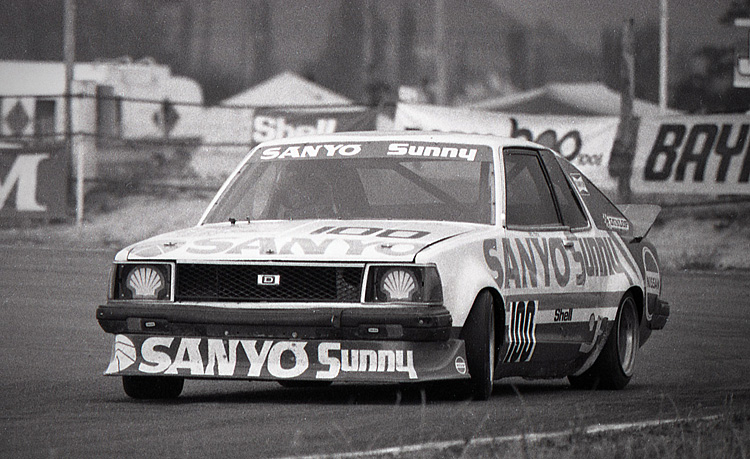-
Administrator

New Zealand ShellSport Saloon Series 1978 - 1985

In early 1977, Motorsport New Zealand announced there would be some major upheavals taking place within the New Zealand ShellSport Saloon Car championship, in which an engine cap of 2,000cc would be introduced. As popular as the big-banger V8s and screaming quad-cam V6s were with the punters, car numbers since the early ‘70s had been a problem, and there was a heavy reliance on international teams bolstering the grids. The 1976/77 Saloon Car Championship had just two cars which entered every round, in Jack Nazers Victor Chevy, and Bill Leckie’s V8 Capri. There was a fuel crisis happening, fuel restrictions, and these cars had become too expensive to build and maintain, and there was a dwindling number of people prepared or able to make the commitment to them.
Shell Oil continued their support through their ShellSport brand which had been in place since the 1976 season, but almost everything else about the 1978 ShellSport series would be different to what had gone before, including the drivers competing at the head of the field. There was a maximum engine size limit of 2,000cc, but there would also be a complicated sliding scale allowing the smaller capacity cars to run lighter than those nearing the maximum limit.
Several of the small capacity cars from the old unlimited ShellSport championship would continue on, but there would also be a number of new cars built for the new series. The look of the ShellSport series was fitting for the period; wide, small diameter wheels bulging from within heavily radiused guards that were housed by neat wheel-arch flares, tinted perspex windows, belly-rubbing ride-heights, large front and rear spoilers, colourful paint schemes, and the frenzied racket of dozens of high-pitched, high-revving small capacity motors.
The ShellSport series was notable as being something of a breakthrough in the popularity of Japanese cars in New Zealand motorsport, as a large number of Datsuns and Toyotas, plus a few Mitsubishi’s and Honda’s, waged battle against the traditionally popular Ford Escorts.
Bryce Platt, driving an Escort, won the inaugural ShellSport championship, after a season long brawl with Reg Cooks Datsun Cherry in which just 2 points separated the pair at seasons end. Cook won the first of three ShellSport championships the following year, using three different Datsuns to gain the title. He won again in 1980, and ’81, before reducing his involvement in the series. Escort driver Roy Harrington won the 1982 championship, after clawing back the early season points leader Warren Burt, in a 1,300cc Toyota Starlet, while Harrington again won the championship in 1983 despite Cook being in charge early on. Tony Marsh, driving a Datsun 1200 coupe, won the 1984 championship, while Warren Steel took the title in 1985, with a four door Datsun Bluebird.
Following the ’85 season, ShellSport withdrew from the championship, to be replaced by Total Coolwool, and along with the new sponsor came a change of engine rules, with a new 2,500cc maximum capacity limit. Geoff Burrows built up a Mazda RX7, and Kieran Wills imported a Group C RX7 from Australia, and these two cars proceeded to dominate what was left of the older ShellSport cars which found themselves quickly running out of breath. The new-look series didn’t catch on. Burrows won most of the races, which were usually predictable drawn-out affairs, and within 12 months the whole thing crumbled.
Fortunately though, racing enthusiasts are gaining an appreciation for the old ShellSport cars, and more of these are being found and restored, and racing once again at historic events.
Photo by Nigel Watts
 Posting Permissions
Posting Permissions
- You may not post new threads
- You may not post replies
- You may not post attachments
- You may not edit your posts
-
Forum Rules






 Reply With Quote
Reply With Quote